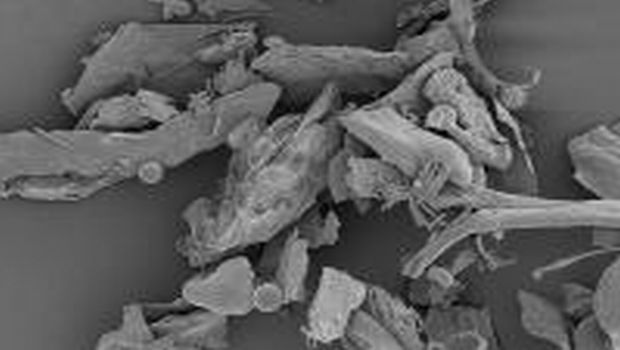Early Exposure to Certain Bacteria May Protect Toddlers From Wheezing
Research funded by the National Institutes of Health (NIH) suggests that exposure to specific combinations of allergens and bacteria within the first year of life may protect children from wheezing and allergic disease. These observations come from the Urban Environment and Childhood Asthma (URECA) study, which aims to identify factors responsible for asthma development in children from inner-city settings, where the disease is more prevalent and severe. Since 2005, the URECA study has enrolled 560 children from four cities-Baltimore, Boston, New York and St. Louis. The children all have at least one parent with asthma or allergies, placing them at high risk for developing asthma. The study is following the children from birth, and the current publication evaluates the group through three years of age.


House dust, shown under high magnification, may contain allergens and bacteria.
Research funded by the National Institutes of Health (NIH) suggests that exposure to specific combinations of allergens and bacteria within the first year of life may protect children from wheezing and allergic disease. These observations come from the Urban Environment and Childhood Asthma (URECA) study, which aims to identify factors responsible for asthma development in children from inner-city settings, where the disease is more prevalent and severe. Since 2005, the URECA study has enrolled 560 children from four cities-Baltimore, Boston, New York and St. Louis. The children all have at least one parent with asthma or allergies, placing them at high risk for developing asthma. The study is following the children from birth, and the current publication evaluates the group through three years of age.
During early life, recurrent wheezing and sensitivity to common allergens are risk factors for developing asthma. In the current study, the researchers measured the frequency of wheezing episodes and levels of exposure to five common inner-city allergens-cat, cockroach, dog, dust mite and mouse. Surprisingly, they found that exposure to cockroach, mouse and cat during the first year of life was associated with a lower risk of recurrent wheezing by age three.
A smaller study within the URECA cohort tested whether bacteria, measured in house dust, influence asthma risk. Researchers sorted 104 children into four groups: no wheezing or sensitivity to allergens, wheezing only, sensitivity to allergens only, or both wheezing and sensitivity to allergens. They found that children with no wheezing or sensitivity to allergens at age three were more likely to have encountered high levels of allergens and a greater variety of bacteria, particularly those belonging to the Bacteriodes and Firmicutes groups, during their first year of life. These observations support the emerging concept that early-life exposure to high bacterial diversity may protect kids from developing allergies. Most importantly, the findings show that this protection is even stronger when children also encounter high allergen levels during this time.
The URECA study, funded by NIH's National Institute of Allergy and Infectious Diseases through its Inner-City Asthma Consortium, is no longer recruiting, but more information is available at ClinicalTrials.gov using the identifier NCT00114881. Additional funding was provided by the NIH's National Center for Advancing Translational Sciences. The research was conducted by investigators from several institutions, including the University of Wisconsin-Madison; the University of California, San Francisco; and Johns Hopkins University.
Reference: SV Lynch et al. Effects of early life exposure to allergens and bacteria on recurrent wheeze and atopy in urban children. Journal of Allergy and Clinical Immunology DOI: 10.1016/j.jaci.2014.04.018 (2014).
“Ongoing Assault”: How HHS Layoffs Have Eviscerated Infection Prevention Support Across the Nation
April 1st 2025Mass layoffs at HHS and CDC have gutted critical infection prevention programs, leaving frontline professionals overwhelmed, under-resourced, and desperate to safeguard public health.
Together We Rise: Why AORN Expo 2025 Is a Must for Every Perioperative Nurse
March 31st 2025From April 5 to 8, 2025, thousands of perioperative nurses will gather in Boston for the 2025 AORN Global Surgical Conference & Expo—a transformational experience designed to elevate nursing practice, build lifelong connections, and advance surgical care.
Vet IP Roundtable 2: Infection Control and Biosecurity Challenges in Veterinary Care
March 31st 2025Veterinary IPs highlight critical gaps in cleaning protocols, training, and biosecurity, stressing the urgent need for standardized, animal-specific infection prevention practices across diverse care settings.